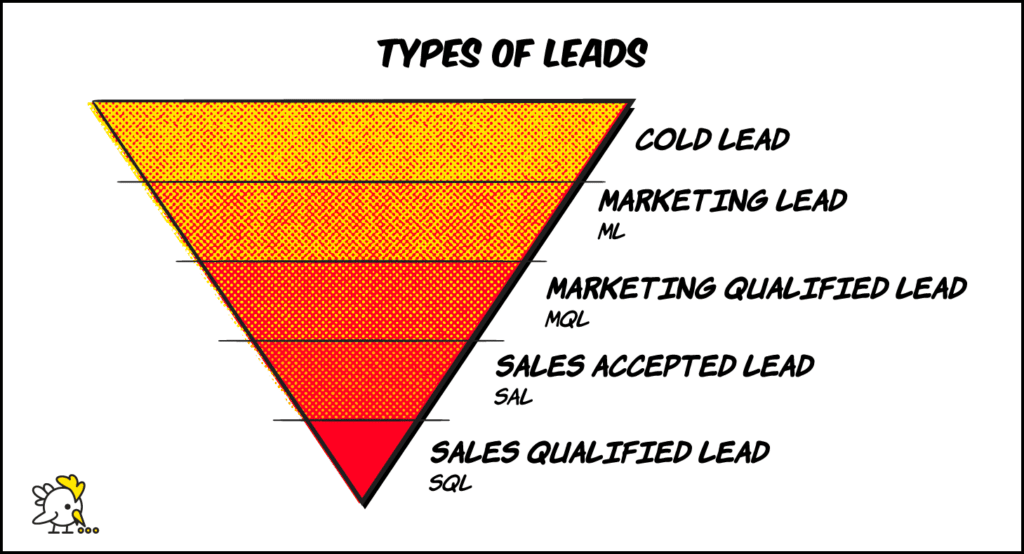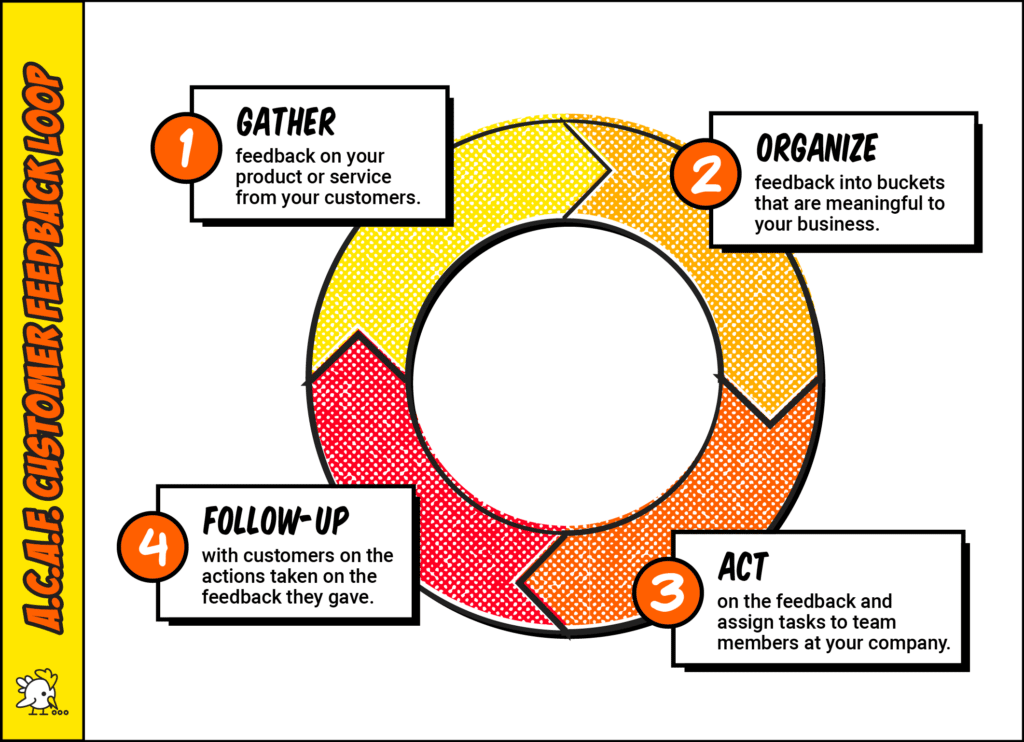You already know that there’s no way around “the voice of the customer” or VoC if you want to truly know your audience. The question is what does a voice of the customer strategy look like? And what are some ways to collect and use the voice of the customer?
In this article, we talk about some tactics to gather the voice of the customer and some practical ways to use them.
Tactics to gather VoC
Gathering Voice of Customer (VoC) is crucial for understanding customer needs and improving your products or services. Here are the top strategies to gather VoC:
- Surveys: take advantage of tools like SurveyMonkey or Google Forms to create and distribute surveys easily.
- Feedback forms: Implement feedback forms on your website, in your product interface, or within email communications.
- Social media monitoring: Engage with customers directly on social media and track sentiment to understand their opinions and experiences.
- Customer interviews: Conduct one-on-one interviews with select customers to delve deeper into their experiences, pain points, and suggestions for improvement.
- Review analysis: Monitor and analyze customer reviews on platforms like Google Reviews, Yelp, and industry-specific review sites.
- Customer support interactions: Review transcripts of customer support interactions to identify common issues, questions, and concerns.
- Net Promoter Score (NPS) surveys: Use NPS surveys to measure customer loyalty and satisfaction. Follow up with detractors and promoters to gather additional insights into their experiences and reasons for their ratings.
How to use VoC to improve lead generation and lead scoring
Using Voice of Customer (VoC) to enhance lead generation can significantly improve the effectiveness of your efforts. Here are the top three ways to leverage VoC to improve lead generation:
1. Understanding customers and defining ICP
Understanding customers and defining Ideal Customer Profiles (ICPs) should be the foundational step in your lead generation strategy. This process guides your future content efforts, ensuring alignment with customer needs and preferences.
Moreover, clear ICPs serve as a touchstone for qualifying leads, streamlining lead scoring processes by focusing on prospects that closely match your defined profiles.
Voice of Customer (VoC) techniques are invaluable in this endeavor, providing actionable insights into customer preferences and behaviors. Utilize VoC gathering tactics such as media monitoring of public sentiment, competitive analysis tools, and direct feedback from your customer base to continuously refine your understanding of customers and ICPs.
Remember, your ICPs should evolve alongside your business, reflecting changes in customer behavior and market dynamics. Regularly review and revise your profiles to ensure they remain accurate and relevant to your growth objectives.
2. Developing customer-centric content
Customer-centric content is specifically tailored to resonate with your target audience’s interests, pain points, and aspirations. In lead generation, this translates to top-of-the-funnel content designed to capture the attention of potential customers during their awareness phase.
Top-of-the-funnel content typically includes informative and engaging pieces such as blog posts, articles, videos, infographics, and social media posts. These pieces aim to attract prospects who are exploring solutions to their problems or seeking information relevant to your industry.
Top-of-the-funnel content for lead generation must be educational, address customers’ common pain points, introduce customers to your solutions, build trust, and increase awareness.
What kind of insights could be useful for designing great content for lead generation?
- Demographic data: age, gender, income, nationality, etc. To gather this kind of data, use CRM data, surveys and polls, and customer interviews.
- Psychographic: interests, pain points, fears, goals, etc. In addition to the methods mentioned above, you can use social media listening and monitoring, review analysis, and advanced predictive analysis to gather these insights
- Behavioral data: how they encounter your content, that is, website pages they visit, email open/response rates, and social media engagement. In addition to the methods above, you can use automation platforms, social media insights, and more.
3. Advanced predictive analytics

Predictive analytics plays a crucial role in identifying opportunities and driving business expansion by leveraging advanced technologies such as AI and machine learning. Predictive analytics helps businesses anticipate future outcomes and make informed decisions by analyzing historical data and market trends.
Customer data, such as data from CRM and automation tools, sentiment analysis, behavioral data, and customer support log insights, can be used to identify patterns and predict future behavior. This kind of insight has many use cases in your lead generation strategy.
- Discovering new verticals: new verticals (i.e., new audience segments) are hidden gems that could only be identified through rigorous audience research. What if you realize your product could be used by marketing agencies in addition to financial service providers? You could start targeting marketing agencies and start a new stream of leads into your company.
- Better product positioning: how you present your product to your audience makes or breaks your campaign. What if you realize that your collaboration software could actually be positioned as a remote work facilitator because people are more interested in remote work these days?
- Defining better ICPs: predictive analytics enables you to determine better ICPs and, as a result, generate better leads. Breadcrumbs’s Reveal and Copilot are designed to identify high-quality leads among your target audience by analyzing how they interact with you.
- Anticipating customer needs: Predictive analytics enables you to understand customer behavior patterns and preferences by analyzing past interactions and transactions.
How Voice of Customer (VoC) metrics can significantly enhance lead scoring efforts
1. Intent-based lead scoring
Intent-based lead scoring is a methodology used to prioritize leads based on their demonstrated intent to purchase or engage with a company’s products or services.
This approach leverages advanced analytics and machine learning algorithms to analyze various sources of data such as website visits, content consumption patterns, social media interactions, keywords searches and engagement with marketing campaigns.
This data allows you to detect some intent signals among your leads. Using these signals, you can identify marketing-qualified leads (MQL) or sales-qualified leads (SQL).

MQLs are the leads that interact with your marketing content but have not yet shown any intent to purchase. SQLs are the leads that have shown clear intent to purchase.
How do you define MQLs and SQLs and start your lead scoring strategy? Typically, you can call the people who interact with your middle-of-the-funnel content as marketing-qualified leads. Engaging with your emails or social media posts, attending webinars, and downloading additional ebooks could be great signs.
For identifying SQLs, these could be good intent signals:
- Interacting with your bottom-of-the-funnel content (downloading a sales brochure for example)
- Requesting demos or custom pricing
- Contacting your sales team

2. Manual lead review and evaluation
In addition to tracking metrics on your CRM and project management or automation tools, you can use VoC strategies to qualify your leads manually. Some VoC tactics can help marketers identify hot leads from others. Using surveys, you can capture the following metrics:
- CSAT (Customer Satisfaction Score): CSAT measures customer satisfaction with a product, service, or interaction. Typically measured through a survey question asking customers to rate their satisfaction on a scale.
- NPS (Net Promoter Score): NPS measures customer loyalty and likelihood to recommend a company to others. Calculated by subtracting the percentage of detractors from the percentage of promoters.

- CES (Customer Effort Score): CES measures the ease of the customer’s experience when interacting with a company. Customers are asked questions such as, “How much effort did you personally have to put forth to handle your request?” Responses are usually on a scale from “Very easy” to “Very difficult.”
Top ways to use VoC to improve revenue operations
Revenue Operations (RevOps) integrates marketing, sales, and support to optimize revenue generation. It heavily relies on data from these departments for streamlined operations. Voice of Customer (VoC) plays a crucial role by providing insights into customer preferences, behaviors, and pain points.
To improve revenue operations using Voice of Customer (VoC), consider these strategies:
1. Sales enablement and optimization
Sales enablement boosts revenue generation by equipping sales reps with the tools, resources, and knowledge needed to effectively engage with prospects and close deals.
Utilize VoC insights to equip your sales team with the right resources, messaging, and strategies to engage effectively with leads, including:
- Determining the right sales goals and metrics: VoC data helps with setting realistic sales targets based on market demand and company goals.
- Training the sales team: VoC data helps identify common pain points and objections, allowing tailored training sessions to address these issues.
- Providing sales enablement content: VoC insights guide the creation of content that resonates with customers, addressing their specific needs and concerns.
- Asking for relevant reporting: VoC data aids in defining relevant reporting metrics, ensuring sales reps track and analyze information that aligns with customer preferences and behaviors.
- Providing qualified leads: VoC strategies help identify high-potential leads by understanding customer behaviors and preferences, ensuring sales reps focus efforts on prospects most likely to convert.
2. Customer retention
Leverage VoC data to identify areas for improving customer satisfaction and loyalty. In general, there are three ways that VoC can help with customer retention. Decreasing churn rate, encouraging repeat purchases, and improving brand loyalty.
Decreasing churn rate
Practices such as customer surveys, feedback forms, and in-depth interviews allow businesses to directly engage with customers and uncover their reasons for leaving.
- Conduct regular customer satisfaction surveys to gather product experience and service quality feedback.
- Implement exit surveys to understand the specific reasons behind customer churn.
- Monitor customer support interactions and feedback channels for recurring issues or complaints.
- Analyze customer behavior data to identify patterns indicative of potential churn, such as decreased engagement or usage.
Holger Sindbaek, the owner of WOCG, shares:
“Incorporating feedback forms into our product update emails opened a direct line to our users’ unspoken needs. This strategy highlighted hidden pain points and fostered a culture of continuous improvement. It was a revelation—feedback from these emails led to pivotal changes that significantly boosted user satisfaction and engagement. It taught us the power of listening, even in the most routine communications.”
Encouraging repeat purchases
VoC methodologies provide valuable insights into customer preferences and behaviors, enabling businesses to tailor strategies to encourage repeat purchases.
- Utilize social media monitoring tools to track and analyze customer sentiment and feedback.
- Implement customer feedback mechanisms such as surveys and feedback forms to gather insights into product satisfaction and areas for improvement.
- Analyze customer support interactions and inquiries to identify opportunities for upselling or cross-selling.
- Leverage behavioral analytics to understand customer purchasing patterns and preferences, enabling targeted marketing campaigns and promotions.
Improving brand advocacy
By soliciting feedback and actively listening to customer voices, businesses can identify pain points, address issues promptly, and deliver personalized experiences that drive customer satisfaction and loyalty.
- Implement customer feedback loops to gather insights into customer preferences, satisfaction levels, and areas for improvement.
- Proactively reach out to customers for feedback through surveys, interviews, and feedback forms.
- Monitor social media channels and online reviews to identify customer sentiment and address negative feedback or concerns.
- Use data analytics to uncover trends and patterns in customer feedback, enabling targeted improvements and initiatives to enhance the overall customer experience.
Wrapping up
When it comes to using insights from the voice of the customer, the sky’s the limit. However, this article focused on collecting and using the voice of the customer (VoC) to improve three main business areas: lead collection, lead nurturing, and revenue operations.
Voice of the customer strategy is the most comprehensive approach to customer intelligence. Once you know how to reach your audience and how to pick their minds, you’ll find ways to improve their overall experience.


